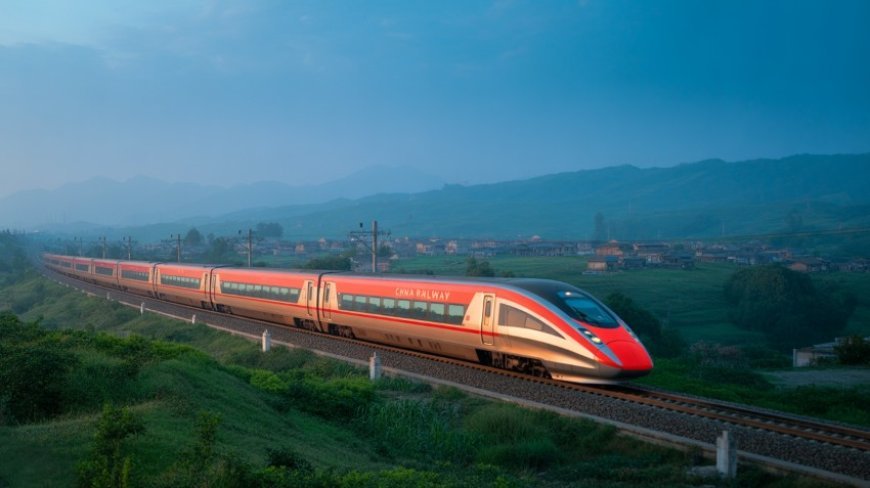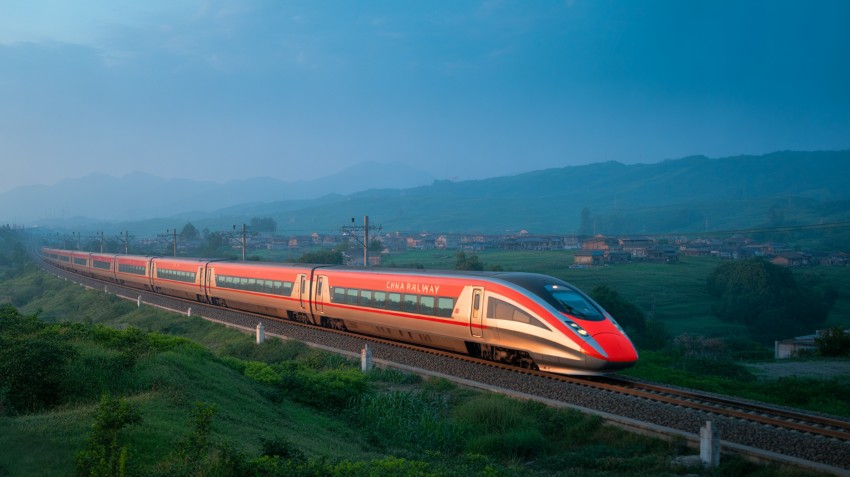China’s High Speed Rail Revolution Transforms Domestic and International Tourism


China’s fast-growing high speed rail system is changing the face of travel, both inside the country and beyond. With the government pushing for an even bigger rail network, travelling through China is becoming faster and more pleasant. Tourists are discovering that they can hop from ancient sites to modern cities with little effort, and international visitors are gaining easy access to places that once felt remote. This growth is more than just tracks and trains; it ties small towns into the national story and encourages hotels to spring up where they are needed most. As the rails stretch farther, entire regions stand to gain.
Expansion of the Rail Network: A Historic Leap
The Chinese Ministry of Transport reported that, by the end of 2024, the nation’s rail network had expanded by an impressive 65% over a span of just 12 years. With a total of 162,000 kilometres of railways, including 48,000 kilometres dedicated to high-speed rail, China now boasts one of the most extensive and fastest-growing rail networks in the world. This expansion has outpaced many nations, including the United States, in terms of total track length. By 2050, China plans to increase its rail system to 274,000 kilometres, further cementing its dominance in global rail infrastructure.
The Surge in Rail Passengers
The high-speed rail network’s growth has been met with overwhelming success, with over 1.86 billion rail passengers recorded in the first five months of 2025, marking a 7.3% increase compared to the same period in 2024. This surge indicates not only the rising popularity of rail travel within China but also its increasing role in the broader tourism landscape. With trains now travelling at speeds of up to 350 kilometres per hour, especially on high-demand routes between major cities like Shanghai and Xi’an, journey times have been slashed, making long-distance travel more efficient and attractive.
Enhancing Domestic Tourism
The strategic development of China’s rail network has aligned with broader national goals of boosting tourism. Under President Xi Jinping’s leadership since 2012, railways have increasingly been seen as vital assets for expanding the tourism industry. The rise of domestic tourism in China has been one of the major drivers of this shift. The introduction of faster and more frequent trains has connected cities and provinces like never before, enabling middle-class urbanites to explore beyond traditional tourist destinations.
Tourism has become a critical pillar in stimulating local economies across China’s vast landscape. By offering fast, convenient rail connections, even third- and fourth-tier cities are seeing a rise in tourist traffic. Cities that were once overlooked are now gaining popularity, attracting younger travellers who are more likely to opt for train travel. This shift in preferences has spurred both domestic and foreign investments in local hotels, as major cities like Beijing and Shanghai become saturated with tourism infrastructure.
The Shift from Air to Rail Travel
One of the most notable impacts of China’s expanding rail network is the decline of domestic air travel. The aviation sector, which was already grappling with the aftermath of the COVID-19 pandemic, now faces stiff competition from the railways. High-speed rail is proving to be a more efficient and economical option for trips under 700 kilometres, offering greater punctuality, competitive pricing, and direct city-centre connections. This has made it a preferable choice for many domestic travellers, who can bypass the time-consuming airport processes.
The rise of rail travel is reshaping the way tourists approach transportation within China. No longer confined to aeroplanes, travellers are now exploring the ease and affordability of rail journeys, which also cut down on the stress of navigating through airports and long-haul flights.
International Tourists and the High-Speed Rail Advantage
While China’s domestic travellers are embracing high-speed rail, foreign visitors are also reaping the benefits. International tour operators have quickly recognised the potential of the high-speed rail network to enhance travel experiences within China. For example, major tour companies now include at least one train journey in 70% of their itineraries, a significant increase from just 20% a decade ago. The growing popularity of rail travel among international tourists has made it a core part of many guided tours, particularly those targeting markets in the UK, Ireland, Australia, and New Zealand.
Wendy Wu Tours, one of the largest operators of tours to China, has highlighted the profound impact that high-speed rail has had on their offerings. The faster travel times allow tourists to explore more destinations within a limited period, and the city-centre locations of train stations make it easier for visitors to access major attractions without the hassle of long commutes. Popular destinations such as Guizhou province and Zhangjiajie are now more accessible, and future expansion plans aim to provide even more direct services to remote regions, including Tibet and the Silk Road areas of Dunhuang.
Challenges and Opportunities for the Future
Despite its many advantages, China’s high-speed rail network does present a few logistical challenges. For example, securing train tickets during peak travel periods can be difficult, and the restricted baggage capacity on bullet trains necessitates additional services to transfer luggage. However, for many tour operators, these obstacles are manageable, and the overall benefits of rail travel far outweigh the inconvenience.
As China continues to develop its rail infrastructure, the tourism industry stands to benefit significantly. With an additional 112,000 kilometres of rail lines expected to be laid over the next 25 years, China’s rail network will not only continue to connect more domestic cities but also provide greater access to international tourists. The future of travel within China is undoubtedly linked to its high-speed rail network, and its impact on tourism will likely grow as the system expands.
Rail Travel as a Catalyst for Growth
China’s high-speed rail lines are not only ribbons of steel speeding from city to city; they are game-changers for tourism. New routes open small towns alongside major attractions, letting travellers hop between China’s treasures in a few comfortable hours. Extended service means tourists get to sample more cuisine, culture, and landscapes than ever. Shops, hotels, and guides in once-overlooked places are already feeling the lift. Planners know the appetite for seamless travel keeps growing; that’s why more tracks, better rolling stock, and greener tech are coming. China’s trains are more than a ride; they are the engine powering a travel boom that is still gathering steam.
The post China’s High Speed Rail Revolution Transforms Domestic and International Tourism appeared first on Travel And Tour World.






